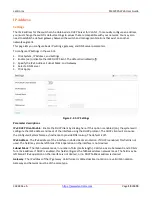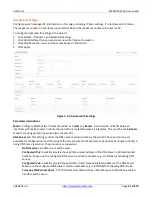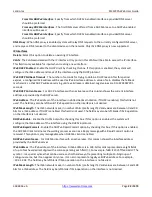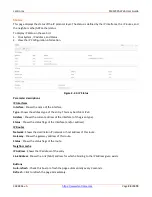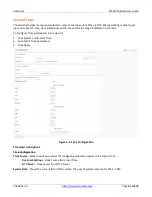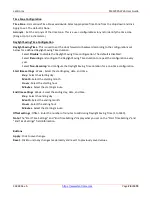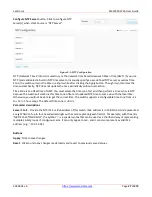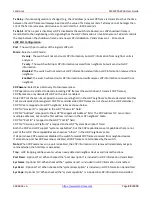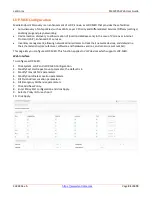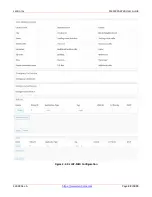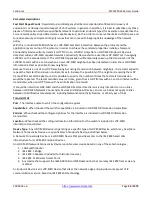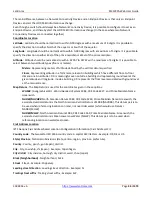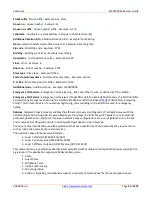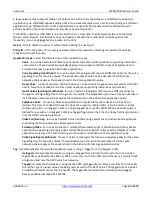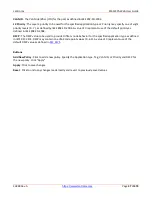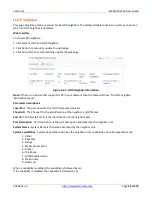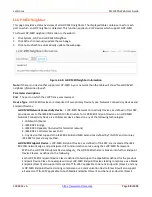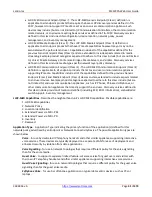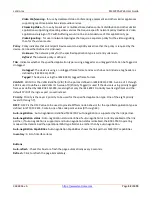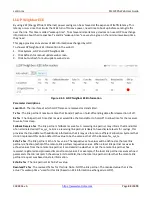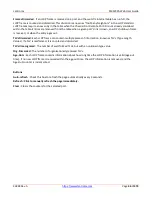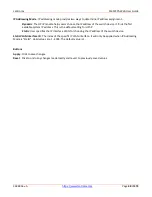
Lantronix
SM12XPA Web User Guide
33848 Rev. A
Page
33
of
473
Parameter descriptions
:
Fast Start Repeat Count
: Rapid startup and Emergency Call Service Location Identification Discovery of
endpoints is a critically important aspect of VoIP systems in general. In addition, it is best to advertise only those
pieces of information which are specifically relevant to particular endpoint types (for example only advertise the
voice network policy to permitted voice-capable devices), both in order to conserve the limited LLDPU space and
to reduce security and system integrity issues that can come with inappropriate knowledge of the network
policy.
With this in mind LLDP-MED defines an LLDP-MED Fast Start interaction between the protocol and the
application layers on top of the protocol, in order to achieve these related properties. Initially, a Network
Connectivity Device will only transmit LLDP TLVs in an LLDPDU. Only after an LLDP-MED Endpoint Device is
detected, will an LLDP-MED capable Network Connectivity Device start to advertise LLDP-MED TLVs in outgoing
LLDPDUs on the associated port. The LLDP-MED application will temporarily speed up the transmission of the
LLDPDU to start within a second, when a new LLDP-MED neighbor has been detected in order share LLDP-MED
information as fast as possible to new neighbors.
Because there is a risk of an LLDP frame being lost during transmission between neighbors, it is recommended to
repeat the fast start transmission multiple times to increase the possibility of the neighbors receiving the LLDP
frame. With Fast start repeat count it is possible to specify the number of times the fast start transmission
would be repeated. The recommended value is 4 times, given that 4 LLDP frames with a 1 second interval will be
transmitted, when an LLDP frame with new information is received.
It should be noted that LLDP-MED and the LLDP-MED Fast Start mechanism is only intended to run on links
between LLDP-MED Network Connectivity Devices and Endpoint Devices, and as such does not apply to links
between LAN infrastructure elements, including Network Connectivity Devices, or other types of links.
Transmit TLVs
Port
: The interface name to which the configuration applies.
Capabilities
: When checked the switch's capabilities is included in LLDP-MED information transmitted.
Policies
: When checked the configured policies for the interface is included in LLDP-MED information
transmitted.
Location
: When checked the configured location information for the switch is included in LLDP-MED
information transmitted.
Device
Type
: Any LLDP-MED Device is operating as a specific type of LLDP-MED Device, which may be either a
Network Connectivity Device or a specific Class of Endpoint Device, as defined below.
A Network Connectivity Device is a LLDP-MED Device that provides access to the IEEE 802 based LAN
infrastructure for LLDP-MED Endpoint Devices
An LLDP-MED Network Connectivity Device is a LAN access device based on any of these technologies :
1.
LAN Switch/Router
2.
IEEE 802.1 Bridge
3.
IEEE 802.3 Repeater (included for historical reasons)
4.
IEEE 802.11 Wireless Access Point
5.
Any device that supports the IEEE 802.1AB and MED extensions that can relay IEEE 802 frames via any
method.
An Endpoint Device is an LLDP-MED Device that sits at the network edge and provides some aspect of IP
communications service, based on IEEE 802 LAN technology.

